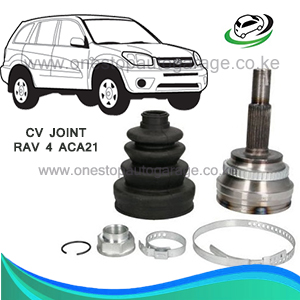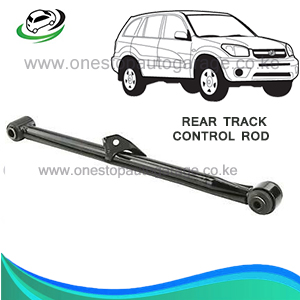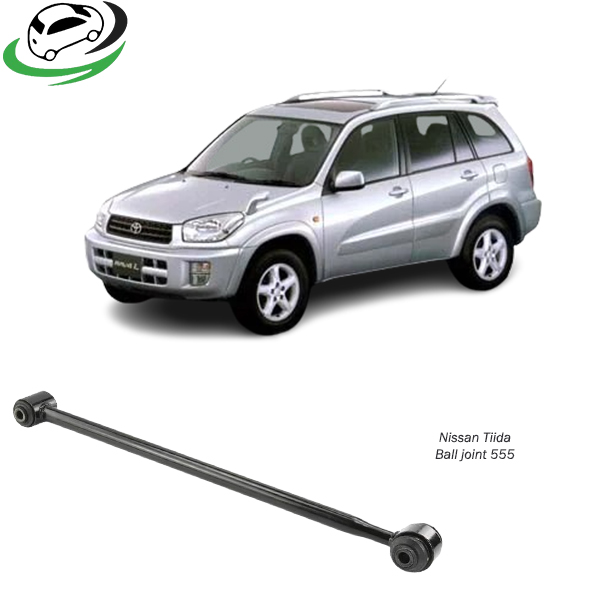-8%
Get Toyota Rav4 ACA21 Rear Upper Track Control Rod 48770-42020
The Rear Upper Track Control Rod is a key component of a vehicle’s suspension system. Its primary role is to maintain proper alignment and control of the rear wheels, ensuring optimal handling, stability, and comfort. To understand its importance, this detailed explanation will cover the structure, functions, benefits, signs of wear, and maintenance tips for the rear upper track control rod.
1. Structure and Components of the Rear Upper Track Control Rod
The rear upper track control rod is part of a broader system known as the multi-link suspension. This suspension system consists of several control arms, rods, and linkages that work together to keep the wheels in proper alignment while absorbing road shocks and impacts. The rear upper track control rod specifically connects the rear axle or wheel hub to the vehicle’s chassis or subframe. Its design typically includes:
- Metal Rod or Arm: The rod itself is often made from high-strength steel or aluminum for durability and to withstand significant forces exerted on it during driving.
- Ball Joints or Bushings: These joints or bushings are located at either end of the rod. They provide pivot points that allow the rod to move in response to suspension articulation while minimizing friction and wear. Rubber or polyurethane bushings are commonly used because of their flexibility and ability to dampen vibrations.
- Mounting Points: The rod is mounted to both the chassis and the rear axle using bolts or specialized fasteners. These points must be strong enough to handle the stresses of acceleration, braking, and cornering.
In some cases, the rear upper track control rod may also include adjustable components, allowing for fine-tuning of the vehicle’s suspension geometry. This adjustability is particularly useful for performance or off-road vehicles where precise alignment is critical.
2. Functions of the Rear Upper Track Control Rod
The rear upper track control rod plays several crucial roles in the suspension system, ensuring the vehicle’s wheels remain properly aligned and stable under different driving conditions. Its main functions include:
- Maintaining Wheel Alignment: The rear upper track control rod helps maintain the correct toe and camber angles of the rear wheels. The toe angle refers to the inward or outward angle of the wheels when viewed from above, while the camber angle is the inward or outward tilt of the wheels when viewed from the front or rear. These angles are essential for tire wear, handling, and stability.
- Ensuring Proper Wheel Movement: The rod allows the wheels to move up and down in response to road surface changes, bumps, and turns. This movement ensures that the tires maintain contact with the road, providing better traction and control.
- Providing Stability During Acceleration and Braking: During acceleration or braking, forces are exerted on the vehicle’s suspension, which can cause the rear wheels to shift or lose alignment. The rear upper track control rod stabilizes the rear wheels, preventing unwanted movement and maintaining a straight driving path.
- Absorbing Lateral Forces: Lateral forces, which occur during cornering or side impacts, can cause the rear wheels to shift from their aligned position. The control rod absorbs and distributes these forces, ensuring the rear wheels stay properly aligned and stable, even during aggressive driving maneuvers.
3. Benefits of the Rear Upper Track Control Rod
The rear upper track control rod provides several benefits that enhance vehicle performance, safety, and comfort:
- Improved Handling and Stability: The control rod plays a key role in maintaining wheel alignment, which is essential for optimal handling. Whether driving in a straight line or navigating tight turns, a properly functioning control rod ensures the vehicle responds predictably to steering inputs.
- Reduced Tire Wear: Misaligned wheels can cause uneven tire wear, leading to premature tire failure and the need for frequent replacements. By keeping the rear wheels aligned, the rear upper track control rod helps extend tire life, saving on maintenance costs.
- Enhanced Ride Comfort: The control rod ensures that the rear wheels can move independently of the chassis, allowing the suspension to absorb road imperfections such as bumps and potholes. This results in a smoother, more comfortable ride for both the driver and passengers.
- Better Traction and Road Grip: Proper wheel alignment ensures that the tires have maximum contact with the road surface. This improves traction and road grip, especially during acceleration, braking, and cornering.
- Increased Vehicle Safety: A properly aligned suspension system, with fully functional control rods, ensures that the vehicle maintains stability during various driving conditions. This enhances overall safety by reducing the risk of losing control, particularly during high-speed maneuvers or emergency braking situations.
4. Signs of Wear in the Rear Upper Track Control Rod
Like all suspension components, the rear upper track control rod is subject to wear and tear over time. Recognizing the early signs of wear can prevent further damage to the suspension system and ensure vehicle safety. Common signs of a worn or failing rear upper track control rod include:
- Clunking or Knocking Noises: A loose or worn control rod may produce clunking or knocking noises, especially when driving over rough terrain or making turns. This is often caused by worn-out bushings or ball joints.
- Excessive Play in the Rear Wheels: If the rear wheels feel loose or have excessive play, it could indicate that the control rod or its mounting points are worn or damaged. This can lead to poor handling and instability.
- Uneven or Rapid Tire Wear: Misalignment caused by a failing control rod can result in uneven or rapid tire wear, particularly on the inner or outer edges of the tires.
- Vibration or Shaking: Worn bushings or ball joints can cause the control rod to vibrate, leading to a shaking sensation in the rear of the vehicle, especially at high speeds or when cornering.
- Poor Handling and Steering Response: If the vehicle feels unstable or difficult to control, particularly when making turns or driving at high speeds, it may be due to a worn or damaged control rod. This can compromise the vehicle’s handling and make it less responsive to steering inputs.
5. Maintenance Tips for the Rear Upper Track Control Rod
Proper maintenance of the rear upper track control rod is essential for prolonging the life of the suspension system and ensuring the vehicle’s safety. Here are some key maintenance tips:
- Regular Inspection: Periodically inspect the rear upper track control rod for signs of wear, damage, or corrosion. Pay special attention to the bushings and ball joints, as these are prone to wear over time. Look for any cracks, tears, or excessive play in the bushings.
- Replace Worn Bushings and Joints: If the bushings or ball joints show signs of wear, replace them immediately to prevent further damage to the control rod or other suspension components. Upgrading to polyurethane bushings can provide improved durability and performance.
- Ensure Proper Alignment: Regularly check the vehicle’s alignment, especially after hitting potholes or curbs, or after any suspension-related repairs. Misaligned wheels can place unnecessary stress on the control rod, leading to premature wear.
- Lubrication: Some ball joints or bushings may require lubrication to reduce friction and prevent wear. Check the manufacturer’s recommendations for lubrication intervals and use high-quality grease designed for suspension components.
- Replace the Control Rod When Necessary: If the control rod itself is bent, cracked, or corroded, it should be replaced immediately. A damaged control rod can compromise the entire suspension system, leading to poor handling, excessive tire wear, and reduced vehicle safety.
- Inspect After Accidents or Off-Road Use: If the vehicle has been involved in an accident or used extensively for off-road driving, inspect the control rod and other suspension components for signs of damage. Off-road conditions can place extra stress on the suspension system, leading to premature wear.
Conclusion
The Rear Upper Track Control Rod is an essential component of a vehicle’s suspension system, contributing to wheel alignment, handling, and overall ride quality. It plays a pivotal role in ensuring that the rear wheels remain properly aligned and stable under various driving conditions, improving both safety and performance. Regular maintenance and inspection of the control rod, along with timely replacements of worn components, are crucial for maintaining the integrity of the suspension system. Whether you’re driving on smooth highways or navigating rough terrains, a well-maintained rear upper track control rod ensures a safe, comfortable, and responsive driving experience.
Follow us on Facebook for more parts.



